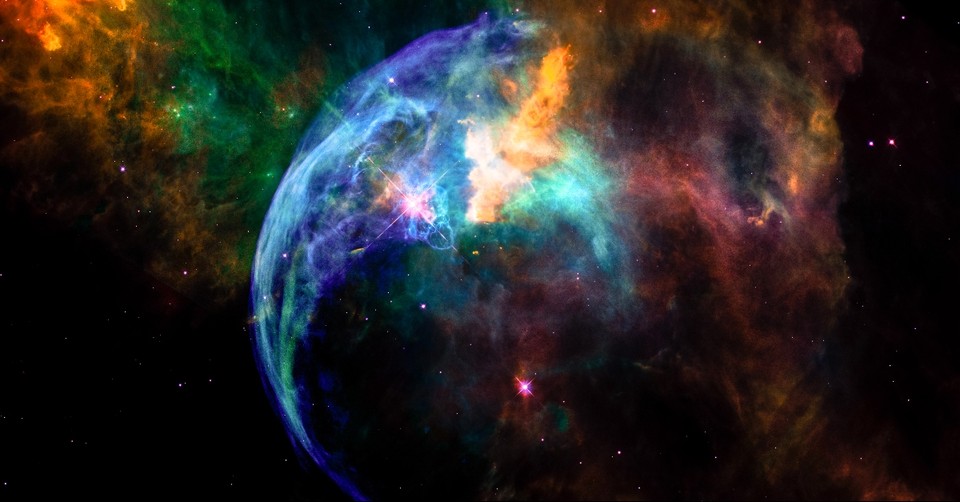How Do We Know the Creation Account Is Accurate?

In the beginning, God created the heavens and the earth. The earth was formless and empty, and darkness covered the deep waters. And the Spirit of God was hovering over the surface of the waters. (Genesis 1:1-2 NLT)
The age of the earth determines whether the creation theory or the evolution theory is more accurate. The creation theory approximates the earth’s age as 6,000 years. The evolution theory approximates the earth’s age as billions of years old.
However, the more we look into the evidence, a 6,000-year-old earth seems more plausible. Consider the following six pieces of scientific evidence found on the website www.answersingenesis.org. Answers in Genesis have done considerable research into Creationism.
6 Pieces of Evidence for a 6,000-Year-Old Earth
1. Carbon-14 Dating is used to potentially date fossils. It uses radioactive decay to tell how long ago something was formed. Because of the rapid rate of decay of Carbon-14, it can only give dates in the thousands range, not in the millions. One simply cannot use radiometric dating procedures to assess how old something is, but must add in and accept assumptions as true before you get a result.
2. Tidal bulges on the moon, combined with the gravitational pull, make the moon spiral outward very slowly. In the past, the moon was closer to the earth. This phenomenon means the moon would have been touching the earth around 1.5 billion years ago. 6,000 years ago, it would have only been 800 feet closer.
3. The earth has a magnetic field that is decaying. The rate of decay coordinates better with a 6,000-year-old earth.
4. A Tyrannosaurus rex femur was discovered to contain flexible connective tissue, blood vessels, and cells. This kind of material cannot last for millions of years.
5. Human population growth over time can also point to the age of the earth. Using a conservative estimate of the population doubling every 150 years, 50,000 years comes out to be 10 to the 99th power. In billions of years, that number would be astronomically higher.
6. In places like the Grand Canyon, massive sections of strata are shown to be tightly folded even when there is no evidence of the sediments being heated. Rock layers bend by extreme heat. These tight folds of strata could not have happened over millions of years, they could have formed relatively rapidly during a catastrophic flood.
The theory of evolution is based on assumptions over scientific facts.
Reasons to Doubt Evolutionary Theory
Charles Darwin himself had doubts about his theory. The Cambrian explosion, a significant event in history, could not be explained by Darwin’s theory. Fossil records show the appearance of many animals without ancestors from previous rock layers. Darwin could not explain this. A world-wide flood with surviving animals could.
Darwin also had doubts about his own ability to come up with such a complex theory. He said, “With me the horrid doubt always arises whether the convictions of man’s mind, which has been developed from the mind of the lower animals, are of any value or at all trustworthy. Would anyone trust in the convictions of a monkey’s mind, if there are any convictions in such a mind.”
Fossil records do not show organisms changing into other kinds of organisms, like evolution touts. Organisms may adapt to fit their changing environment, adapting is not the same thing as evolving.
The 2nd law of thermodynamics, or entropy, says the general tendency of the universe is to move from order to chaos. The basic idea of evolution says things naturally grow more complex over time. Evolutionists, over time, have realized this intense contradiction. In response, they relied on their imaginations and came up with Goldilocks' theories. They said even though the basic law of thermodynamics is entropy, at specific moments of time, these Goldilocks moments have happened. Magical moments happened instantly to move things forward in spite of entropy. Or, as Richard Dawkins has said, “Each step is a small piece of random luck.”
Can the Theory of Evolution Actually Be Considered Scientific Fact?
Science Daily says that a scientific method is based on the collection of data through observation and experimentation. Does observable evidence prove evolution? If evolution happens slowly over millions of years, there is no way of observing it. Richard Dawkins concurred with this when he said, “We are condemned to live only for a few decades, and that’s too slow, too small a time scale to see evolution going on.”
Evolution cannot be observed, so it cannot be a scientific fact. The idea of evolution can be a theory, however, and people have a choice to believe in it or not. But you cannot say you simply believe it because it’s a fact.
What we can observe are the intense intricacies we know about our planet and our own bodies.
In space, stars often explode into supernovas. The Earth, however, is located in such a position, it doesn’t fall victim to devastating collisions with stars. Our moon also protects us from collisions with debris. Nearby Jupiter also draws objects that have the potential to hit the Earth. In the universe, too many stars grouped together can cause immense radiation. The Earth only has a few stars near it, so too much radiation isn’t a problem. Somehow, our planet is placed in just the right position to protect it.
The Earth is the right distance from our solar system’s sun—any closer and we, as well as our water supply, would burn up, and any further, we’d freeze. Even the tilt of our planet makes a huge difference. If it was tilted differently, temperatures would quickly rise or lower to extremes. The size of the Earth is also just right to hold just the right amount of oxygen and carbon dioxide - both are essential to sustaining life. The Earth is different from every other planet around it, and it contains the perfect conditions for life.
The human body has many parts and systems that work seamlessly to fight off problems and diseases. For the most part, everything works perfectly without the person’s opinion or guidance. It takes seven octillion atoms to make up one human body. The eye has the equivalent of 576 megapixels. Even the smallest parts of us have a purpose. The pinky finger contributes to about fifty percent of the hand’s strength. The body has a multitude of parts that work in sync.
These intricacies point to intelligent design, as described in Genesis 1.
It could be that the theory of evolution was thought up to separate mankind from any form of accountability. If organisms gradually changed over time to eventually form human beings, it doesn’t matter how we live because, in that theory, literally nobody cares about humans. We’re just here. But in the theory of creationism, God created a beautiful world where His creations can thrive. Then when His creations rebelled against His rule, He planned a way to give them atonement for their sins and a second chance.
In the beginning the Word already existed. The Word was with God, and the Word was God. He existed in the beginning with God. God created everything through Him, and nothing was created except through Him. The Word gave life to everything that was created, and His life brought light to everyone. The light shines in the darkness, and the darkness can never extinguish it. (John 1:1-5 NLT)
Evolution or Creation? You have a choice. Which seems more plausible?
Photo Credit: ©iStock/Getty Images Plus/Elen11

Originally published March 14, 2023.







